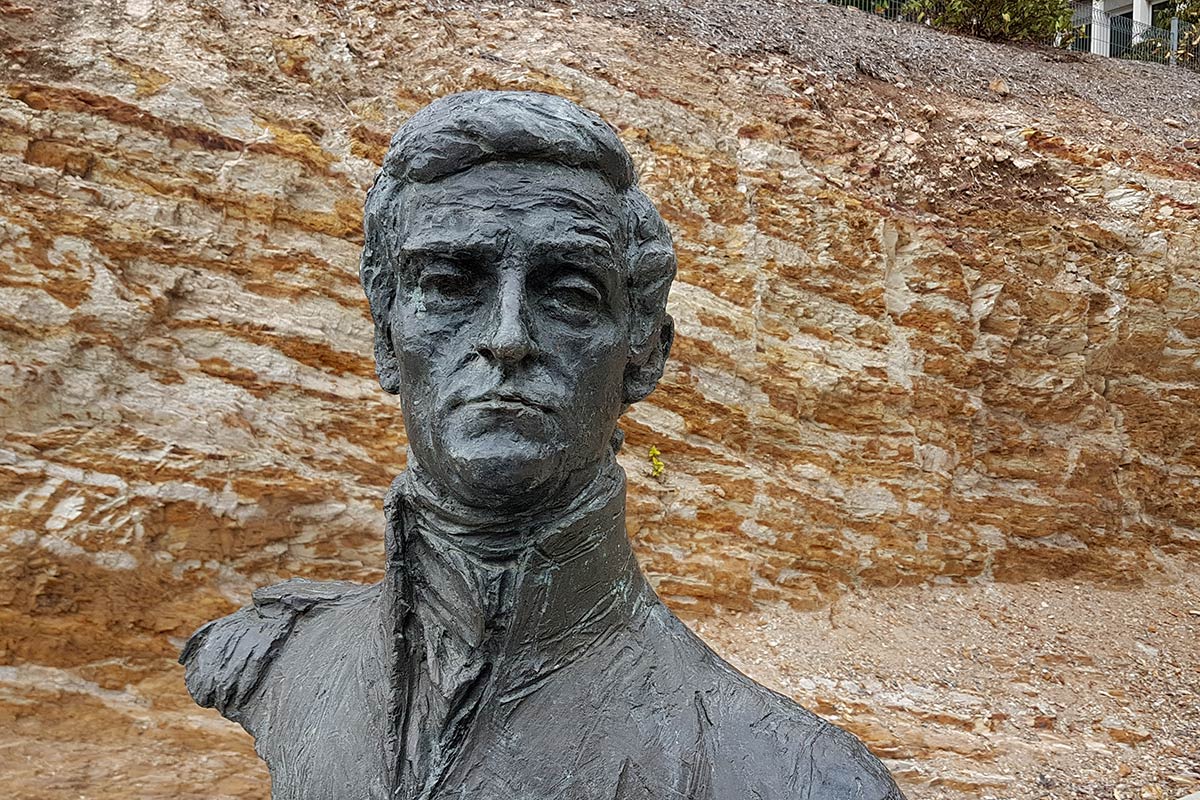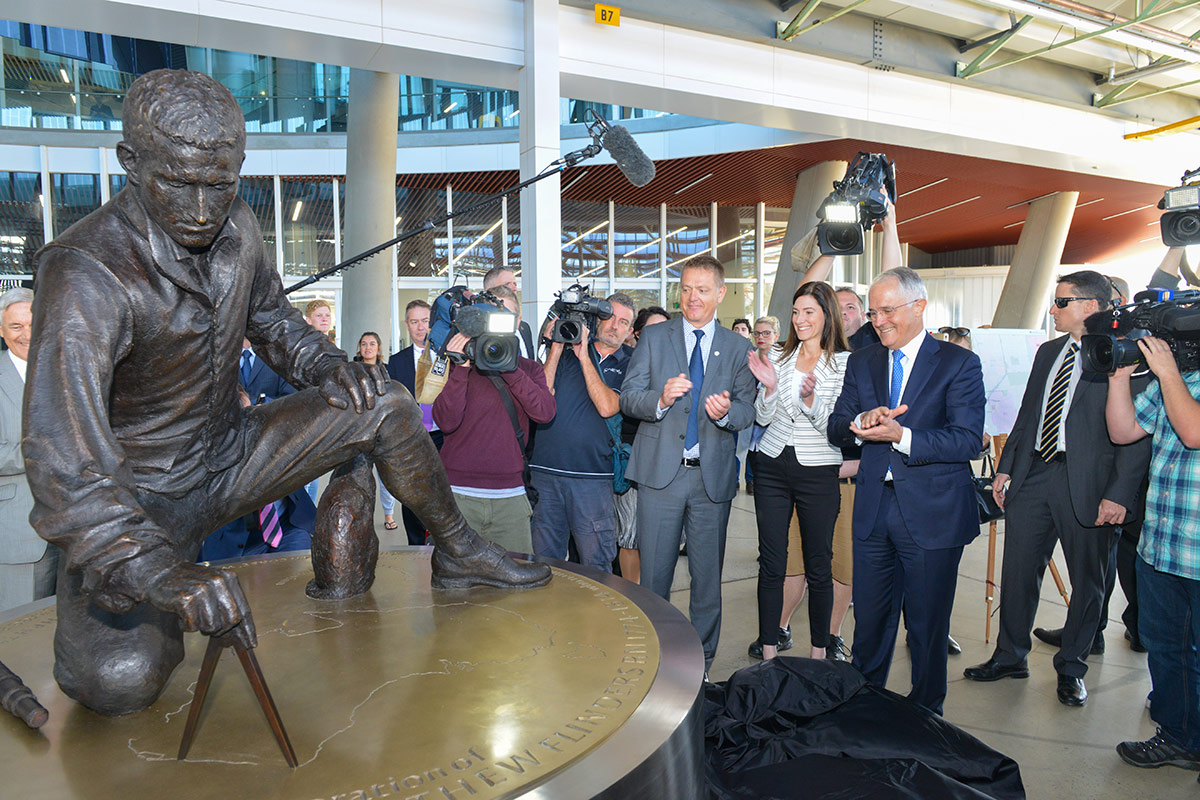
Flinders University – named in honour of Matthew Flinders – congratulates researchers for finally locating the remains of the intrepid navigator.
Vice-Chancellor Colin Stirling says the discovery ends a long-standing mystery and enables one of history’s great explorers to be properly honoured.
“Matthew Flinders was a man of great ambition who was determined to leave his mark in the world. His legacy includes the first circumnavigation of the land he would name as ‘Australia’. Yet for many years his remains went unnoticed under London’s Euston Station.
“How fitting, as we prepare to mark Australia Day, that his grave has been identified and that the great explorer can now be assigned a fitting final resting place where his legacy can be appropriately recognised,” Professor Stirling says.
After extensive digging, archaeologists have discovered the body of explorer Captain Matthew Flinders at a burial site beneath Euston Station in London, 216 years after he circumnavigated Australia.
His remains were identified thanks to a well-preserved lead breastplate. Flinders, who died at the age of 40, had a headstone which was removed in the 1840s, leading to fears the remains would not be identified ahead of the construction of a new rail link at the Euston Station site.
Dr Gillian Dooley, a Flinders honorary senior research fellow who has devoted much of her career to Matthew Flinders, is presenting a lecture on the history of Flinders and his cat Trim in London in April.
“I’m very pleased that his remains have been found and he can now be treated with the respect he deserves,” she says. “Even in death, after his short and unsettled life, he hasn’t been allowed to rest in peace in the English countryside, which is what he wished for. Let’s hope this can now be achieved.”
Flinders University Head of History, Professor Peter Monteath, who’s published on Flinders’ encounter with French explorer Baudin in SA waters, says the Flinders University namesake led an extraordinary life, making a significant contribution to charting the coast of Australia and influencing the country’s European settlement.
“I think it’s quite a good name for a University,” says Professor Monteath, co-author of Encountering Terra Australis: the Australian voyages of Nicolas Baudin and Matthew Flinders (Wakefield Press).
“When you’re looking for someone to name a University after, Flinders was a good idea because he embodies that idea of exploration and journeying into the unknown and was something of a scientist himself, a man of many skills and wide-ranging knowledge,” Professor Monteath says.
Professor Claire Smith, from Flinders University Archaeology, says the major dig under Euston Station demonstrates the importance of exploring history.
“The mammoth job of combing through a mass cemetery under the Euston Station reveals a lot about that time in history,” she says.
“The fact that Flinders had both a headstone and a lead breastplate shows that he was well recognised in his time. While the headstone was removed, the breastplate made it possible to identify his remains.
“All around the world, graves and headstones are important memorials to future generations, and unmarked graves can leave many questions and lock away history forever,” Professor Smith says.

To commemorate the explorer’s achievements, a bronze statue by noted British sculptor Mark Richards was unveiled at Euston Station in London in 2014. In 2016, a full-sized replica of the statue was unveiled at Flinders University Tonsley campus.
Leader of the first circumnavigation of Australia, Captain Matthew Flinders RN (16 March 1774-19 July 1814), made three voyages to the southern ocean between 1791 and 1810.
As commander of the Investigator, Flinders circumnavigated the mainland and created the first complete map of the continent on his third voyage in 1801.
Although he returned home in 1810, Flinders did not live to see the publication of his monumental work, A Voyage to Terra Australis, dying one day after its publication on 19 July 1814. That work – including a journal, maps, atlas and countless drawings – is an essential historical document that contributed to the naming of our country.
Matthew Flinders’ work and influence lives on, and his name is associated with more than 100 geographical features and places in Australia. Having extensively explored and surveyed the South Australian coastline in 1802, he is of particular importance to South Australia.
Flinders is remembered for his sense of adventure, his innovations in navigation and cartography, his groundbreaking scientific work, his embrace of technology, and his consideration for his crew’s health and wellbeing – all qualities that make him a suitable inspiration to Flinders University.

